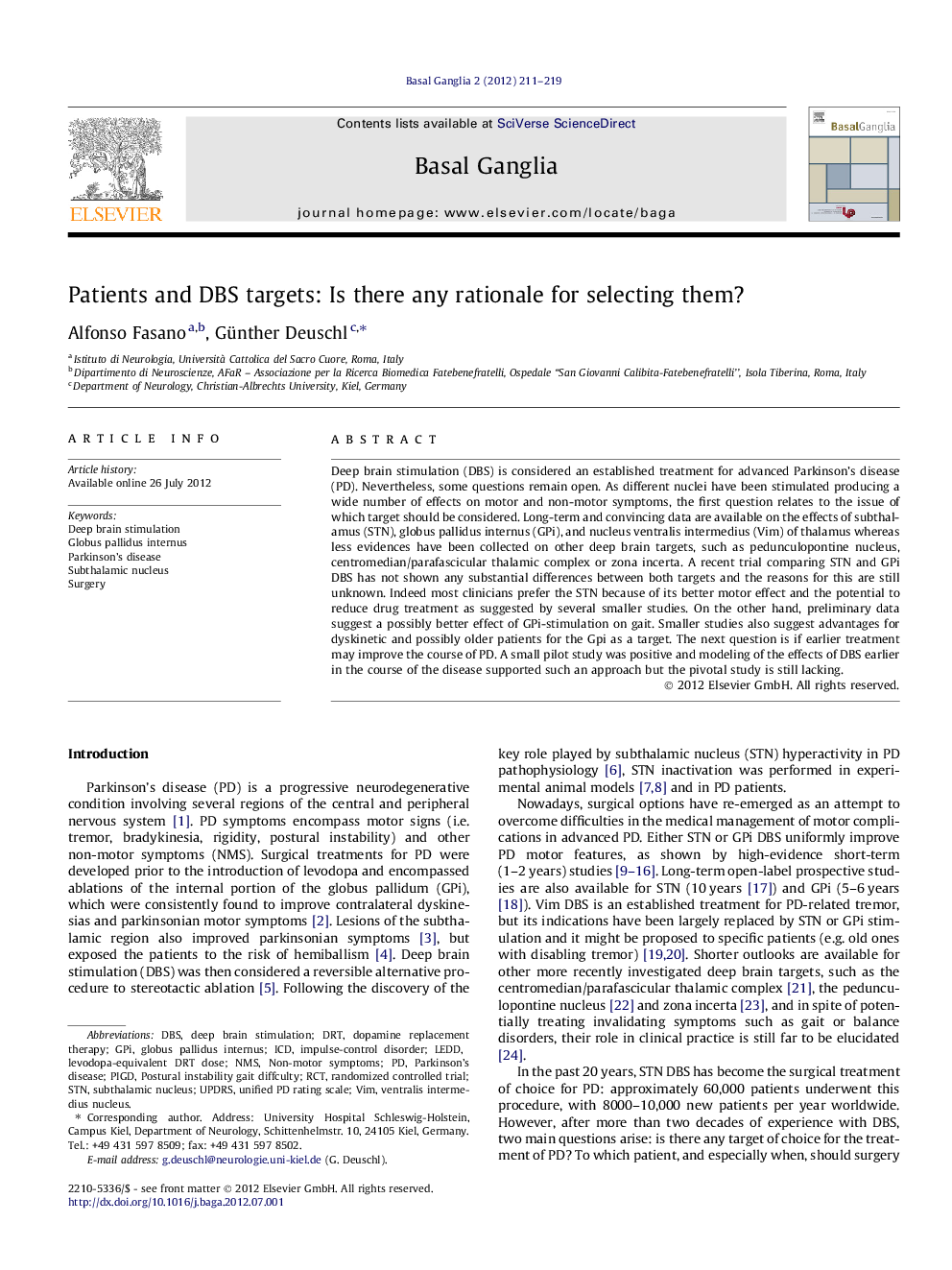| Article ID | Journal | Published Year | Pages | File Type |
|---|---|---|---|---|
| 3036263 | Basal Ganglia | 2012 | 9 Pages |
Abstract
Deep brain stimulation (DBS) is considered an established treatment for advanced Parkinson's disease (PD). Nevertheless, some questions remain open. As different nuclei have been stimulated producing a wide number of effects on motor and non-motor symptoms, the first question relates to the issue of which target should be considered. Long-term and convincing data are available on the effects of subthalamus (STN), globus pallidus internus (GPi), and nucleus ventralis intermedius (Vim) of thalamus whereas less evidences have been collected on other deep brain targets, such as pedunculopontine nucleus, centromedian/parafascicular thalamic complex or zona incerta. A recent trial comparing STN and GPi DBS has not shown any substantial differences between both targets and the reasons for this are still unknown. Indeed most clinicians prefer the STN because of its better motor effect and the potential to reduce drug treatment as suggested by several smaller studies. On the other hand, preliminary data suggest a possibly better effect of GPi-stimulation on gait. Smaller studies also suggest advantages for dyskinetic and possibly older patients for the Gpi as a target. The next question is if earlier treatment may improve the course of PD. A small pilot study was positive and modeling of the effects of DBS earlier in the course of the disease supported such an approach but the pivotal study is still lacking.
Keywords
Related Topics
Life Sciences
Neuroscience
Neurology
Authors
Alfonso Fasano, Günther Deuschl,
